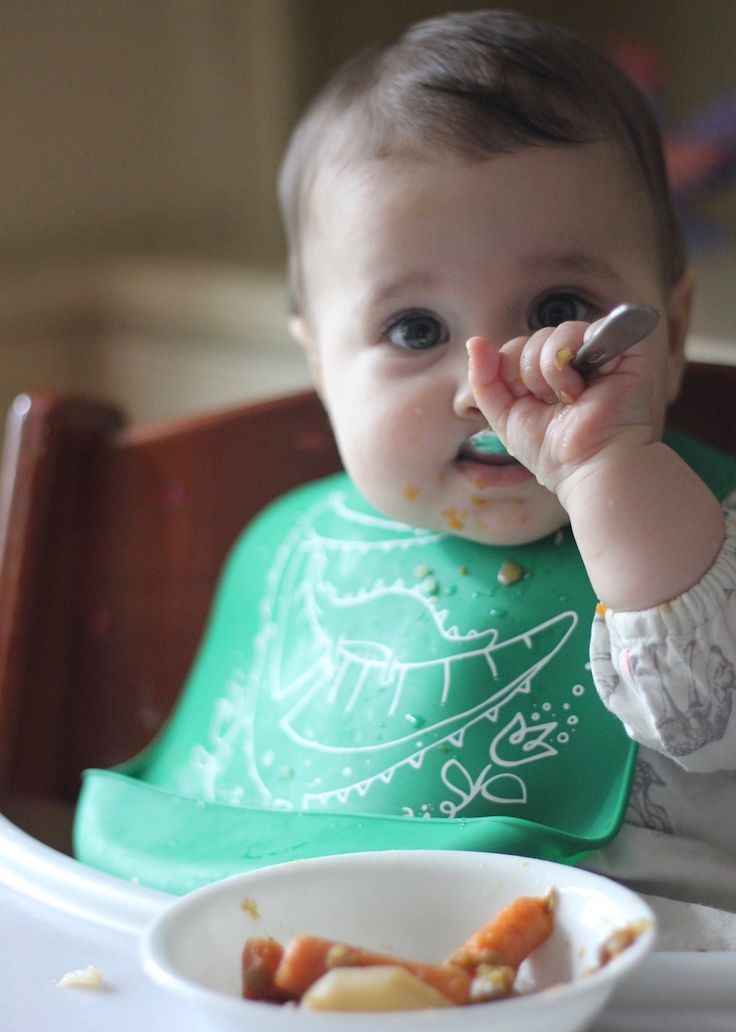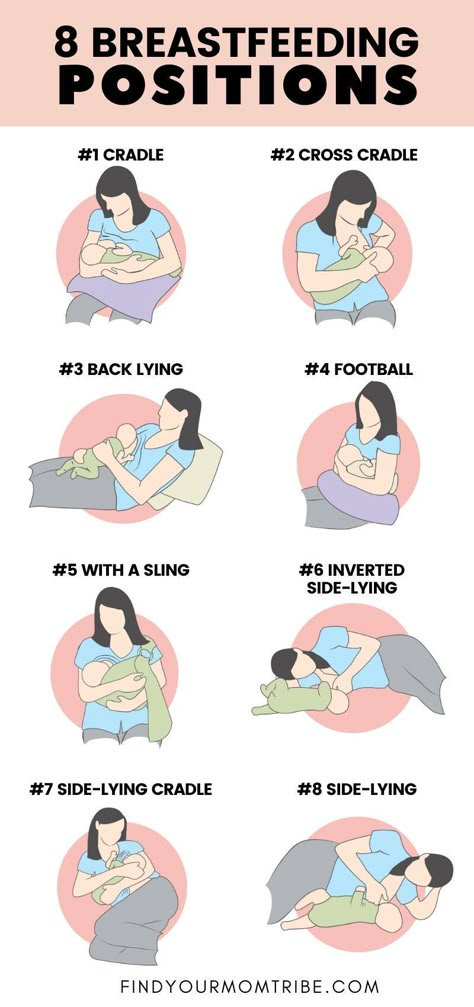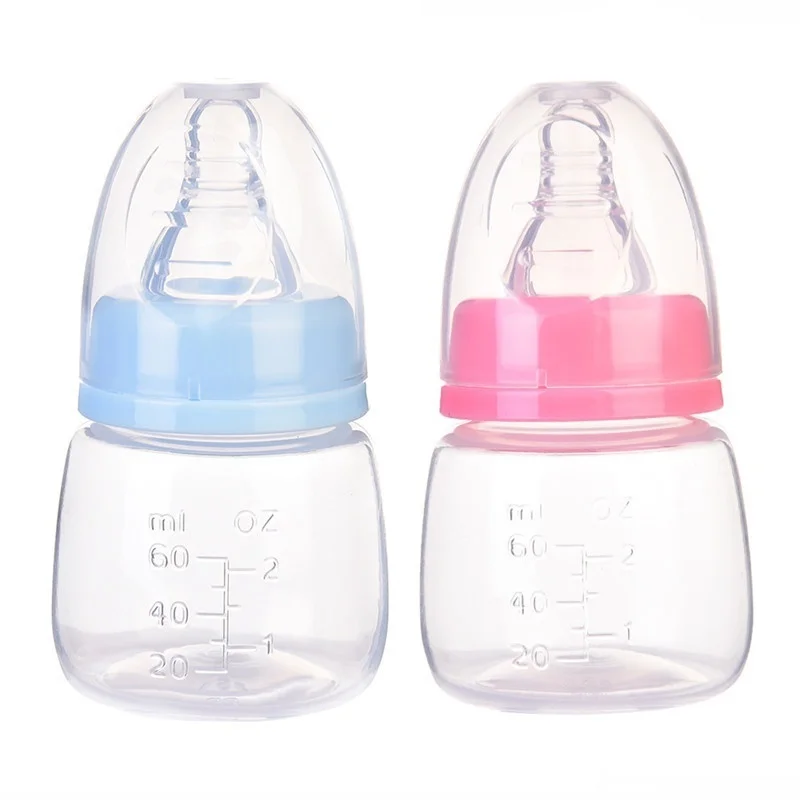When can i feed my baby broccoli
Why broccoli is one of the best first foods for baby-led weaning
Today I am going to show you exactly how to give your baby broccoli and why it is one of the best first foods for baby-led weaning! I am even going to talk about how to get your fussy eater to love broccoli! It is not an impossible task I promise you!
Over the past few years, I have received countless messages from parents telling me they just couldn’t get their child to eat broccoli. Using the tips and advice below I have helped them not only get their little ones to eat broccoli but to also love it too!
There are many ways to encourage your child to eat their veggies and I promise if you are struggling this is the post for you!
Let’s dive right in (to broccoli)
- Why broccoli is one of the best first foods for baby-led weaning?
- When can babies eat broccoli?
- How to cut broccoli for baby led weaning?
- How do I cook broccoli for my baby?
- For smaller babies starting weaning 6 months to 12 months old
- Babies 12 months to 18 months
- Serve Broccoli with a vitamin C rich food
- How much broccoli is one portion?
- Why do kids hate broccoli so much?
- How do I get my kids to eat broccoli?
- Make broccoli fun!
- Mix it up
- Don’t just hide it
- Be a role model!
- Be patient!
- Try different ways to cook broccoli for kids
Why broccoli is one of the best first foods for baby-led weaning?
If you have been following my page for a while you will know that broccoli is one of my favourite veggies and for very good reason. Broccoli is one of the cheapest and best superfoods on the planet, in my personal opinion! Use your money on the superfoods grown on your doorstep instead of ones imported from faraway lands.
Broccoli is quite literally bursting with goodness from vitamin C, vitamin K to calcium and most importantly iron, which is necessary for the healthy growth and development of your baby. Broccoli also contains a little protein about 2.5g per 100g so you can really see why I call it a true superfood because it really is super! You can read more about the nutrition of broccoli on WebMD.
This year, I started a degree in nutrition and the more I learn, the more I fall in love with vegetables. The quicker you can get your veggies from the farm to your plate the more goodness you get from them. So locally grown is always best!
When can babies eat broccoli?
From 6 months + your baby can eat broccoli, providing it is squashable between your finger and thumb. Broccoli naturally comes with a perfect little handle making it one of the easiest first foods for baby-led weaning. Broccoli is one of the best vegetables for your baby to explore and because of its size and shape.
Broccoli is one of the best vegetables for your baby to explore and because of its size and shape.
How to cut broccoli for baby led weaning?
Babies 6 months – 9 months
As the first food for baby-led weaning, cut the broccoli leaving as much of the floret stem as possible. This ensures that the florets are super easy for your baby to pick up and put to their mouth on their own. A broccoli floret like the ones shown above is the ideal size for a baby from 6 months.
Babies 9 months +
As your baby gets older they will develop their pincher grasp, this is where they are able to pick up smaller pieces of food using their finger and thumb. It is important not to give smaller pieces of soft food to your baby until this develops as it can be really frustrating for them to eat it. This usually develops around 9 months so try cutting the broccoli into smaller pieces and trying your baby with it. If they find it hard at the beginning mix it up with a regular larger floret and a few smaller pieces.
This usually develops around 9 months so try cutting the broccoli into smaller pieces and trying your baby with it. If they find it hard at the beginning mix it up with a regular larger floret and a few smaller pieces.
How do I cook broccoli for my baby?
For smaller babies starting weaning 6 months to 12 months old- Steam the broccoli until you can squash it between your finger and thumb. The broccoli should be soft but not completely falling apart.
- If you are super nervous, slice the broccoli stem in half and try half at a time.
- Make sure your baby is sitting up, in their highchair, then place one floret in front of your baby and watch! Your baby may not put any in their mouth and for the first few times might just play with the broccoli, but eventually, they will get the hang of it. I promise!
As your baby’s teeth grow and she becomes a better eater, you can cook the broccoli a little less. It shouldn’t be raw or crunchy and should always be safe! Cooking less will keep as many of the nutrients in the broccoli as possible.
It shouldn’t be raw or crunchy and should always be safe! Cooking less will keep as many of the nutrients in the broccoli as possible.
Serve Broccoli with a vitamin C rich food
Broccoli contains non-heme iron which on its own is harder to absorb. To make it easier though, simply serve with a food rich in vitamin C, at the same meal. Serving a vitamin C rich food could simply mean a dessert of raspberries or sliced strawberries. When you give your baby these at the same meal your baby will maximise the amount of iron in their yummy broccoli.
How much broccoli is one portion?
There is no recommendation for portion sizes for babies under the age of 3, however, when your baby is starting weaning, a small floret is plenty for them. Remember your baby gets 75% of all their nutrition from milk so don’t overload their tray with too much food. Start with a small floret served with a portion of protein for example shredded chicken, homemade fish cakes or turkey meatballs, then if your baby seems hungry, offer a little more.
Go by your baby’s cues and trust that they know when they are full.
For children aged between 3-7 the recommended portion of vegetables is 40g. For adults, the portion size is 80g. Roughly speaking that is approximately a handful of broccoli based on the size of the actual person.
Why do kids hate broccoli so much?
Children have twice as many taste buds as us grown-ups which make them really sensitive to bitter tastes. Broccoli contains glucosinolate compounds which have a bitter taste and your child may just be really sensitive to them. It’s not your fault Momma! The bitterness naturally found in broccoli explains why it is one of the vegetables children most likely detest.
By giving your baby bitter tasting vegetables as their first foods for baby-led weaning, you will increase the chances of them liking those vegetables for life!
Then remain consistent and give broccoli to your baby every week. Even when you see them loving it and you are thinking of moving onto the next vegetable. Broccoli should be part of your weekly serving of vegetables for the entire family.
Broccoli should be part of your weekly serving of vegetables for the entire family.
Familiarity is the key here. The more you can get your child to eat broccoli, the more they will love it. Check out my recipes for fussy eaters and don’t despair!
How do I get my kids to eat broccoli?
Did you know that children have twice as many taste buds as grown-ups which makes them really sensitive to bitter tastes? Broccoli contains glucosinolate compounds which have a bitter taste and your child may just be really sensitive to those compounds. This explains why broccoli might be one of the last vegetables your child will touch. Be consistent though! Not liking broccoli is a pretty common thing (just search Google to see what I mean).
This is really common and explains why broccoli is one of the last vegetables eaten an/or the one you will be consistently trying to encourage your child to eat. Your child just might not like it…yet!
Don’t despair though! There are ways to get your kids eating more broccoli without resorting to the broccoli song (been there, done that!).
Make broccoli fun!
I’m sure you just read that and instantly thought – yeah right there is nothing fun about broccoli. But, I kid you not! Broccoli can be made into a super fun food on a child’s plate and it will also help their amazing imagination. Try decorating your child’s plate with broccoli trees and mashed potato clouds, little peas for footprints, or you could try making a seascape like the one I used in my Salmon Fishy Nuggets.
Mix it up
Serve broccoli as part of a grouping of veggies. Frozen mixed vegetables are great for this as your child gets a portion of carrots, broccoli and usually cauliflower altogether.
Don’t just hide it
Sometimes it is o.k to hide vegetable, you might be having a stressful day and you’re thinking ‘I just want my child to eat broccoli’. Or maybe your child is super fussy and hiding them just seems easier. However, I would encourage you, even if you are hiding them, to add a full floret onto their plate too. It is a great way for your child to see what broccoli looks like and it really helps if you are eating it too.
It is a great way for your child to see what broccoli looks like and it really helps if you are eating it too.
Be a role model!
Yes parents, eat your broccoli! When your child sees you eating your veggies, they are way more inclined to eat them too.
Be patient!
A real foodie isn’t made in a day. Just like Rome wasn’t built in a day. It takes at LEAST 15 tries for your child to develop a taste for new food. Start on a Sunday, add a floret to their plate, see if they eat it. If they don’t that’s o.k. Do the same again on Wednesday, then perhaps on Friday, make a dish that contains broccoli, like these delicious fritters which you seriously will love yourself! Remember back to that thing of being a role model!. Let your little one know that it is made with broccoli and how delicious it is. Broccoli fritters are amazing and really great for lunchboxes too!
Try different ways to cook broccoli for kids
Steamed broccoli can be bland so try different ways of cooking broccoli. Stir-frying, roasting with some spices or if you are serving steamed try adding a cheesy sauce! This always helped clear plates in my house.
Stir-frying, roasting with some spices or if you are serving steamed try adding a cheesy sauce! This always helped clear plates in my house.
Best Broccoli Recipes for Babies
Baby Bowl Recipes baby led weaning Buddah Bowl Buddha Bowl Finger foods first foods First foods broccoli first foods for baby led weaning broccoli Freezer Filler Recipes Fussy eaters Starting baby led weaning Toddler Food
Broccoli Can Babies Eat Broccoli? - First Foods for Baby
When can babies eat broccoli?
Broccoli, when cooked until soft, may be introduced as soon as baby is ready to start solids, which is generally around 6 months of age.
Recommended Guide: 50 Fantastic First Foods for Babies
Where does broccoli come from?
In Italian, the name “broccoli” translates to the “sprouts of cabbage,” which is appropriate given the edible flower’s origins. The broccoli bloom is a brassica—a diverse plant family that includes collard greens, gai lan, kale, kohlrabi, turnip, and many other common vegetables bred thousands of years ago from wild cabbage in the lands around the Mediterranean Sea. Cultivated broccoli fueled the Roman Empire long before it traveled with human migration and trade to other parts of the world, including North America, where Italian immigrants popularized the cruciferous vegetables in the 20th century. Today, broccoli florets are one of the most widely consumed vegetables in the United States, though the leaves and stems are edible, too.
The broccoli bloom is a brassica—a diverse plant family that includes collard greens, gai lan, kale, kohlrabi, turnip, and many other common vegetables bred thousands of years ago from wild cabbage in the lands around the Mediterranean Sea. Cultivated broccoli fueled the Roman Empire long before it traveled with human migration and trade to other parts of the world, including North America, where Italian immigrants popularized the cruciferous vegetables in the 20th century. Today, broccoli florets are one of the most widely consumed vegetables in the United States, though the leaves and stems are edible, too.
Is broccoli healthy for babies?
Yes. Broccoli is a nutritional powerhouse. Broccoli is an excellent source of vitamin A, which supports eye health. Broccoli also contains vitamin B6 and folate, for growth and brain development, as well as fiber for healthy digestion. Powerful phytochemicals, like sulforaphane, also abound in broccoli and may inhibit the development of several types of cancer.1
Powerful phytochemicals, like sulforaphane, also abound in broccoli and may inhibit the development of several types of cancer.1
There are numerous varieties of broccoli to try, each with its own nutritional profile: romanesco, a gorgeous lime-green variety with fractal blooms; purple sprouting broccoli; and broccoli rabe, a more bitter, leafy variety.
★Tip: Steaming or microwaving broccoli (as opposed to boiling) helps retain its nutrients.2 Roasting broccoli works, too, though this method may yield a tougher texture. For young babies, steamed broccoli has the benefit of softness for their tender gums.
Is broccoli a common choking hazard for babies?
Yes, raw or undercooked broccoli is firm and hard to chew. To minimize the risk, cook broccoli until soft and cut broccoli stems in half lengthwise. As always, make sure you create a safe eating environment and stay within an arm’s reach of baby during meal time. For more information on choking, visit our sections on gagging and choking and familiarize yourself with the list of common choking hazards.
Is broccoli a common allergen?
No. Allergies to broccoli are rare, but possible.3 4 Individuals who are allergic or sensitive to other members of the cruciferous family, such as mustard greens and cauliflower, may also be sensitive to broccoli.5 6 People who are allergic to mugwort may be allergic to broccoli or experience Oral Allergy Syndrome (also known as pollen-food allergy). Oral Allergy Syndrome typically results in short-lived itching, tingling, or burning in the mouth and is unlikely to result in a dangerous reaction.
As you would when introducing any new food, start by offering a small quantity for the first few servings. If there is no adverse reaction, gradually increase the quantity over future meals.
Can broccoli help babies poop?
Yes. Broccoli offers excellent amounts of soluble and insoluble fibers, glucosinolates, and phenolic compounds that, together, contribute to overall digestive health and bowel regularity.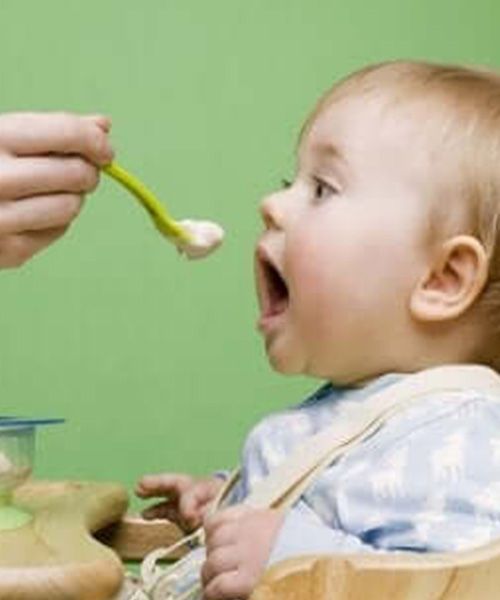 7 8 9 Note that pooping patterns can vary significantly from baby to baby. Be sure to talk to your pediatric healthcare provider if you have concerns about your baby’s pooping and digestive function.
7 8 9 Note that pooping patterns can vary significantly from baby to baby. Be sure to talk to your pediatric healthcare provider if you have concerns about your baby’s pooping and digestive function.
How do you prepare broccoli for babies with baby-led weaning?
Every baby develops on their own timeline, and the suggestions on how to cut or prepare particular foods are generalizations for a broad audience. Your child is an individual and may have needs or considerations beyond generally accepted practices. In determining the recommendations for size and shape of foods, we use the best available scientific information regarding gross, fine, and oral motor development to minimize choking risk. The preparation suggestions we offer are for informational purposes only and are not a substitute for child-specific, one-on-one advice from your pediatric medical or health professional or provider. It is impossible to fully eliminate all risk of a baby or child choking on any liquid, puree, or food. We advise you to follow all safety protocols we suggest to create a safe eating environment and to make educated choices for your child regarding their specific needs. Never disregard professional medical advice or delay in seeking it because of something you have read or seen here.
6 to 9 months old: Bigger is better! Serve large florets that have been steamed until they are soft and the stems are easily pierceable by a fork. For the youngest eaters, if you serve a large broccoli floret upside-down (on its head with the stem up), baby will likely pick it up by the stem and eat the soft floret top. Another option is to serve cooked broccoli stems. Simply peel broccoli stem to remove some of the tough outer layers and steam until soft. From there, cut the stem in half vertically, so that it is no longer cylindrical. You can also grate raw broccoli or mash steamed broccoli to fold into finger foods like egg cups or egg strips.
9 to 12 months old: Try serving small, bite-sized pieces (about the size of a large adult knuckle) of cooked broccoli stem or floret. If your baby is having a hard time picking up the small pieces, just move back up in size to larger cooked florets and model how baby can take bites.
12 to 24 months old: This is a great time to introduce a utensil, pre-loading with bite-sized pieces of cooked broccoli as needed. As the child develops their tearing and chewing skills, you can decrease the amount of time you are steaming or cooking the broccoli a bit. Follow the child’s ability (and your gut instinct) and incorporate broccoli into any dish as desired.
A large, steamed broccoli floret with the stem cut lengthwise so it is no longer round for babies 6 months+A steamed broccoli stem, with tough outer skin removed, for babies 6 months+Feeling anxious? Have a look at our First 100 Days: Daily Meal Plan for Starting Solids.
Where are recipe ideas for cooking with broccoli for babies?
Serve steamed broccoli florets alongside a dip (herby yogurt!), dressing (peanut sauce!), or spread (hummus!) and show baby how to swipe a piece of broccoli for extra flavor. You can try cooking broccoli in stir-fries with beef, mushrooms, or tofu and stir in ramen noodles or your favorite pasta to round out the meal. Broccoli can be blended with herbs and olive oil to make a simple sauce for chicken or pasta. Finally, try shredding raw broccoli florets to make egg cups, egg strips, or egg frittatas. Want to keep it simple for baby? You can’t go wrong with steamed broccoli with a simple lemon vinaigrette.
You can try cooking broccoli in stir-fries with beef, mushrooms, or tofu and stir in ramen noodles or your favorite pasta to round out the meal. Broccoli can be blended with herbs and olive oil to make a simple sauce for chicken or pasta. Finally, try shredding raw broccoli florets to make egg cups, egg strips, or egg frittatas. Want to keep it simple for baby? You can’t go wrong with steamed broccoli with a simple lemon vinaigrette.
Recipe: Lemony Broccoli
Yield: 3 cups (720 milliliters)
Cook Time: 15 minutes
Age: 6 months+
Recipe By Solid Starts
Ingredients
- 3 cups (228 grams) fresh or frozen broccoli florets
- 1 tablespoon (15 milliliters) olive oil
- 1 tablespoon (15 milliliters) lemon juice
- salt to taste for adults and older children (optional:12 months+)
Directions
- Wash broccoli florets.
- Steam broccoli with ½ cup (120 milliliters) of water on the stovetop or in the microwave until soft.
 This process takes about 4 minutes in the microwave or 8 minutes on the stovetop.
This process takes about 4 minutes in the microwave or 8 minutes on the stovetop. - Transfer florets to a mixing bowl. Drizzle over them oil and the lemon juice. Stir to coat.
- Scoop some cooked florets onto baby’s plate. Exact serving size varies. Let the child decide how much to eat. Allow child’s portion to cool to room temperature.
- Keep florets warm for adults and older children and salt to taste.
Serve the Broccoli
- Let baby self-feed with their hands.
- If you’d like to encourage baby to use utensils, pre-load a utensil and place it next to the food for the child to pick up. Alternatively, pass a preloaded utensil in the air for the child to grab.
To Store: Lemony Broccoli keeps in an airtight container in the fridge for 4 days.
★ Tip: Like to meal prep? This recipe can be easily scaled up. Just don’t add lemon juice and salt until you are ready to serve. This way, the broccoli stays fresher and salt-free for baby, and you can add seasonings to order for adults and older children.
Flavor Pairings
Broccoli pairs well with beef, chicken, lentils, pasta, rice, and tofu.
Reviewed by
J. Truppi, MS, CNS. Certified Nutrition Specialist®
V. Kalami, MNSP, RD, CSP. Board-Certified Pediatric Dietitian and Nutritionist
K. Tatiana Maldonado, MS, CCC-SLP, CBIS, CLEC. Pediatric Feeding Therapist
K. Grenawitzke, OTD, OTR/L, SCFES, IBCLC, CNT. Pediatric Feeding Therapist
Dr. S. Bajowala, MD, FAAAAI. Board-Certified Allergist & Immunologist (allergy section)
Dr. R. Ruiz, MD, FAAP. Board-Certified General Pediatrician & Pediatric Gastroenterologist
- Bringing Up Broccoli. (n.d.). @berkeleywellness. Retrieved April 9, 2022
- Wu, X., Zhao, Y., Haytowitz, D. B., Chen, P., & Pehrsson, P. R. (2019). Effects of domestic cooking on flavonoids in broccoli and calculation of retention factors. Heliyon, 5(3). https://doi.org/10.1016/j.heliyon.2019.e01310
- Sugita, Y.
 , Makino, T., Mizawa, M., & Shimizu, T. (2016). Mugwort-Mustard Allergy Syndrome due to Broccoli Consumption. Case Reports in Dermatological Medicine, 2016. https://doi.org/10.1155/2016/8413767
, Makino, T., Mizawa, M., & Shimizu, T. (2016). Mugwort-Mustard Allergy Syndrome due to Broccoli Consumption. Case Reports in Dermatological Medicine, 2016. https://doi.org/10.1155/2016/8413767 - Scott, O., Galicia-Connolly, E., Adams, D., Surette, S., Vohra, S., et al. (2012). The safety of cruciferous plants in humans: a systematic review. Journal of biomedicine & biotechnology, 503241. DOI:10.1155/2012/503241. Retrieved April 29, 2022
- Blaiss, MS., McCants, ML., Lehrer, SB. (1987). Anaphylaxis to cabbage: detection of allergens. Ann Allergy Asthma Immunology, 58(4):248-50. Retrieved April 29, 2022
- Hermanides, H.K., Laheÿ-de Boer, A.M., Zuidmeer, L., Guikers, C., van Ree, R., et al. (2006). Brassica oleracea pollen, a new source of occupational allergens. Allergy, 61(4), 498–502. DOI:10.1111/j.1398-9995.2006.01055.x. Retrieved April 29, 2022
- Sikorska-Zimny K, Beneduce L. The glucosinolates and their bioactive derivatives in Brassica: a review on classification, biosynthesis and content in plant tissues, fate during and after processing, effect on the human organism and interaction with the gut microbiota.
 Crit Rev Food Sci Nutr. 2021;61(15):2544-2571. doi: 10.1080/10408398.2020.1780193. Retrieved April 25, 2022
Crit Rev Food Sci Nutr. 2021;61(15):2544-2571. doi: 10.1080/10408398.2020.1780193. Retrieved April 25, 2022 - Bunzel, M., Seiler, A., & Steinhart, H. (2005). Characterization of dietary fiber lignins from fruits and vegetables using the DFRC method. Journal of agricultural and food chemistry, 53(24), 9553–9559. https://doi.org/10.1021/jf0520037
- Cartea ME, Francisco M, Soengas P, Velasco P. Phenolic compounds in Brassica vegetables. Molecules. 2010;16(1):251-280. Published 2010 Dec 30. doi:10.3390/molecules16010251. Retrieved April 25, 2022
The first complementary food of broccoli: how to introduce it correctly and how much to give
08/02/2022
≈ 5 min read time
Contents
- Why is it important what is included in the first complementary foods
- Health Benefits of Broccoli for Babies
- When can I introduce broccoli into complementary foods
- How much to give
- How to cook broccoli for breastfeeding
- Is it better to cook yourself or buy ready-made complementary foods?
- Allergic reaction
Broccoli is a famous and popular vegetable in the food world. On the one hand, children's dislike for this type of cabbage is often mentioned. On the other hand, scientific studies confirm its unique beneficial properties and ability to protect against diseases. Not surprisingly, broccoli is included in the recommendations of the National Program for Optimizing Baby Feeding.
On the one hand, children's dislike for this type of cabbage is often mentioned. On the other hand, scientific studies confirm its unique beneficial properties and ability to protect against diseases. Not surprisingly, broccoli is included in the recommendations of the National Program for Optimizing Baby Feeding.
In the 1st year of life, the baby grows and develops extremely rapidly. During the first 5-6 months, the weight of the baby doubles. Mother's milk for a baby is the most correct food. According to scientists, the composition of breast milk is not just a “food supply”, it is one of the most important elements of “health programming”.
According to WHO recommendations, breastfeeding should be continued for as long as possible, up to 2 years. However, by a certain age, this “miracle product” alone is not enough for a child:
- Your baby's nutritional needs are increasing. Breast milk is no longer able to satisfy them in full. First of all - the need for iron;
- the baby spends more and more energy;
- it is necessary to introduce the child to more complex foods: chewing and swallowing are very important physiological skills.
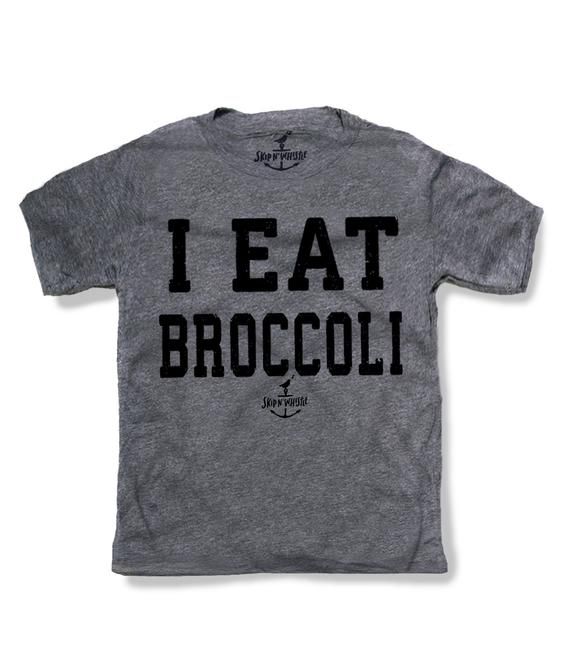
“Complementary foods are an important and most powerful factor in the formation of taste habits,” says the National Feeding Optimization Program.
Taste preferences can depend on many aspects: genetic, on the diet of the mother during breastfeeding, with age, both family customs and national traditions will influence. But some features of taste perception are laid down in the womb.
For example, babies do not like bitter and sour tastes, children, as a rule, begin to get used to salty tastes quite quickly, but they immediately “taste” sweet ones. Therefore, according to the recommendations of the European Society of Pediatric Gastroenterologists, Hepatologists and Nutritionists (ESPHGAN), salt and sugar should not be added to complementary foods: the habit of salty is not healthy, and after tasting “sweet”, the child will refuse “unsweetened”, but necessary vegetables. For the same reason (among others), experts do not recommend starting complementary foods with fruit purees and juices.
Vegetable puree is a product recommended for proper first complementary foods. It is especially suitable if the baby is overweight and constipated. The latter is a common problem: according to some reports, constipation is detected in 20-35% of infants.
Fiber helps a lot with peristalsis, and vegetables are rich in it, but it is important that the fiber is not coarse. That is why broccoli for the first feeding is the traditional recommendation of experts, but this cabbage is introduced secondarily, after zucchini. It has a lot more fiber, and if you start with it, excessive gas formation can occur.
The word "broccoli" comes from the Latin "branch", or "hand": there really is a certain external resemblance. This member of the cabbage family is a rich source of some essential nutrients. For example, if 100 g of orange contains 59.1 mg of vitamin C, then the same amount of broccoli contains 303 mg.
Rich broccoli:
- potassium : it is necessary for all functions, including the functioning of the kidneys and heart, muscles, nervous system;
- beta-carotene : in the body it is converted into vitamin A, which is important for vision, the development of the immune and reproductive systems;
- Vitamin C : works as an antioxidant, protecting cells from free radical damage.
 In addition, vitamin C is needed for the production of collagen, which is necessary for the healing of skin lesions. Also, this vitamin helps to absorb iron from plant foods;
In addition, vitamin C is needed for the production of collagen, which is necessary for the healing of skin lesions. Also, this vitamin helps to absorb iron from plant foods; - Biotin : This B-vitamin helps convert dietary carbohydrates, fats and proteins into energy;
- vitamin K : important for bone health and blood clotting.
Broccoli is a good source of vegetable protein: 2.57 g per 100 g of product.
At what point to introduce broccoli puree into complementary foods depends on the degree of development of the digestive and central nervous system of your particular baby. In simple terms, you need to start when he is ready to perceive new food:
- holds head confidently and can sit with support;
- since birth, the weight of the baby has doubled;
- the child became more active;
- the “spoon push” reflex faded;
- the baby is interested in everything that surrounds him, reaches for objects;
- emotional reactions have become brighter: the baby smiles at those he often sees, makes different sounds;
- pulls toys into the mouth and makes chewing and champing movements;
- shows interest in what mom eats.

Now science does not name a specific age for the introduction of new products, but a time interval. According to the National Program for the Optimization of Feeding, the introduction of complementary foods for both breastfeeding and artificial feeding is recommended to start at the age of 4–6 months. This period is called the "critical window". It is important for the formation of the so-called. food tolerance, when the immune system "learns" not to overreact to proteins from food. And, of course, the "critical window" is important for the prevention of deficiency of essential nutrients.
The ESPGHAN Nutrition Committee also advises that, regardless of how the child was fed, complementary foods (including the first meal of broccoli) should be introduced between the 17th and 26th first weeks of life. But before that, you need to consult with a pediatrician.
Experts recommend:
- to introduce complementary foods, while maintaining and continuing breastfeeding or artificial feeding, it is necessary, starting with a very small portion - 1 tsp.
 Complementary foods should always come immediately before breastfeeding or formula feeding;
Complementary foods should always come immediately before breastfeeding or formula feeding; - give complementary foods in the 1st half of the day: it is important to observe whether the child tolerates the product well, and so there will be enough time to follow the reaction of the body;
- within 5 days-weeks, gradually increase the portion to the volume recommended for the age of the baby.
Important: Do not introduce broccoli (or any new food) during an acute infectious disease. You also need to wait 3-5 days before and after vaccination.
For the first feeding, it is safer to use commercially produced purees. However, if you are confident in the quality of the vegetable, then, of course, you can make mashed potatoes yourself. Both fresh and frozen broccoli are suitable for this.
The recipe for cooking broccoli for complementary foods is simple:
- Rinse the cabbage thoroughly: grains of sand may linger in fresh inflorescences.

- Soak broccoli in water for 20-30 minutes.
- Boil for 5-7 minutes after boiling (up to 15 minutes if the cabbage was frozen). It is preferable to cook for a couple: it will retain more nutrients. Steamed fresh broccoli takes 5 minutes, frozen 10 minutes.
- Grind with a blender until a homogeneous puree state: the texture of the puree should be homogeneous, without pieces and visible inclusions. If the puree is too thick, it can be diluted a little with water, vegetable broth, breast milk, or infant formula that a child usually receives.
When vegetable puree is included in the diet, you can gradually add a little vegetable oil.
And if the baby is capricious, is it necessary to insist?
Stories about children's dislike for broccoli do not appear from scratch. Force-feeding, of course, is not necessary - but it is unlikely that it will succeed. Therefore, do not force, but periodically offer the baby to still try a new product.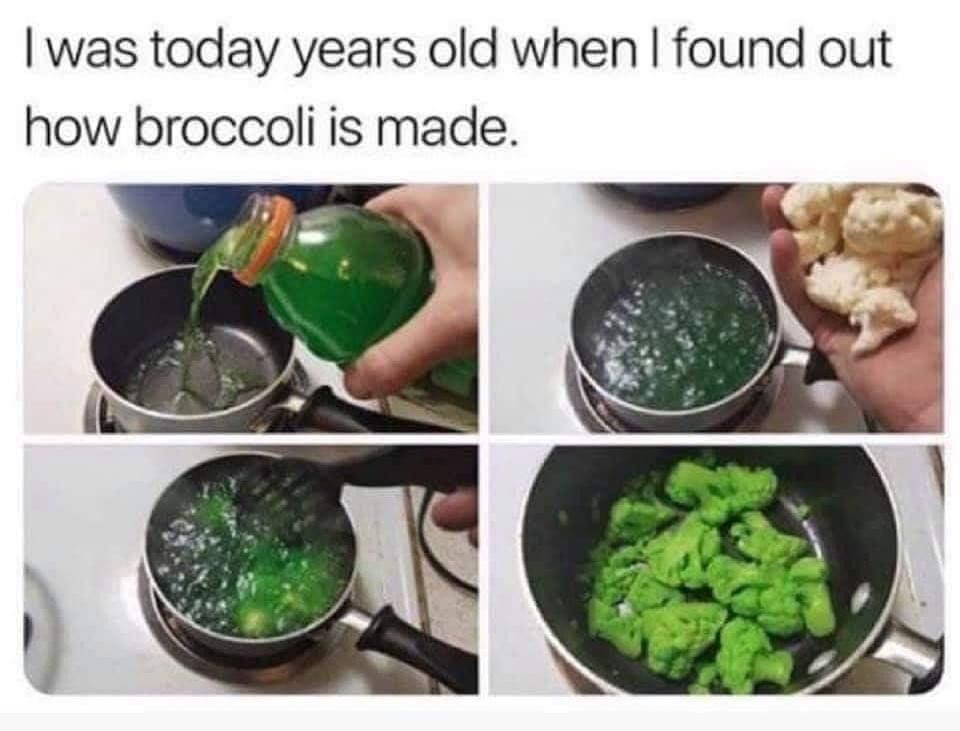 The fact is that rejection of unfamiliar food is not a sign that a particular product is not suitable for a child, and he intuitively rejects it. There is a version that this is an evolutionary defense mechanism: nature had to somehow restrain curious fidgets who, throughout the history of mankind, strove to try everything, and not necessarily useful.
The fact is that rejection of unfamiliar food is not a sign that a particular product is not suitable for a child, and he intuitively rejects it. There is a version that this is an evolutionary defense mechanism: nature had to somehow restrain curious fidgets who, throughout the history of mankind, strove to try everything, and not necessarily useful.
So do not leave cautious and tactful attempts. Sometimes, in order for a child to finally "accept" a new product, it is necessary to offer many times. This should be done by alternating with complementary foods with other vegetables - zucchini or cauliflower. Sometimes a “trick” can help in such a situation: you need to gradually mix a new product with an already familiar one, gradually increasing the amount of broccoli and reducing the proportion of zucchini.
It may seem that if mom prepares complementary foods herself, it will be more reliable. But, according to the National Program for the Optimization of Feeding, it is advisable to still use commercially produced purees.
The experts argue:
- products are made from high-quality raw materials that fully comply with all legislative norms and requirements for baby food;
- Complementary foods constantly undergo strict quality control;
- products have an optimal consistency and degree of grinding;
- Complementary foods are sometimes enriched with biologically active components.
For example, you will be sure how much potassium, carbohydrates, and nutritional value are contained in an 80-gram jar of Agusha Broccoli vegetable puree. Indicators may vary slightly, but only within acceptable limits. With an industrial product, you don't have to worry about not overcooking or overcooking it. It is enough to lower the jar into water and gradually heat the water to 80 ° C, and a pink thermo icon will inform you about the readiness: it will become transparent. Then you just need to take out the jar and wait for the thermal icon to turn pink again - and please, delicious and proper complementary foods are ready.
Important: do not forget to give your baby water between feedings - in small portions, in the amount of 150-200 ml per day. You can offer either specialized bottled children's or boiled.
There is a so-called "Big Eight" of foods to which the body can most often respond with an allergic reaction. These are chicken eggs, cow's milk, wheat, soybeans, nuts, peanuts (formally legumes), seafood and fish. They do not belong to the first complementary foods, even if the child is not at risk for allergies.
Broccoli is recognized as a hypoallergenic product, therefore it is suitable for the first feeding, incl. children who are at risk for allergies. Domestic experts conducted a study of broccoli complementary foods for allergenicity and noted its good tolerance and digestibility.
If the baby has a rash on the cheeks, peeling, red spots, upset stools after taking broccoli, of course, the mother should contact the pediatrician. Very often, the “culprit” may not be broccoli, but something else. The cause of the development of an allergic reaction may be the substances that the plant was treated with during growth and storage. The use of industrial puree for complementary foods reduces the likelihood of such a reaction, as the manufacturer carefully checks the raw materials. But still, one cannot exclude the individual reaction of the child to the vegetable itself. The pediatrician will help you understand the true cause of the unwanted reaction.
The cause of the development of an allergic reaction may be the substances that the plant was treated with during growth and storage. The use of industrial puree for complementary foods reduces the likelihood of such a reaction, as the manufacturer carefully checks the raw materials. But still, one cannot exclude the individual reaction of the child to the vegetable itself. The pediatrician will help you understand the true cause of the unwanted reaction.
References
- The program for optimizing the feeding of children in the first year of life in the Russian Federation. Guidelines. Ministry of Health of the Russian Federation. 2019 https://minzdrav.midural.ru/uploads/document/4908/optimizatsii-vskarmlivaniya-detej-pervogo-goda-zhizni.pdf
- Vitamin C. The Office of Dietary Supplements (ODS) of the National Institutes of Health (NIH) https://ods.
 od.nih.gov/factsheets/VitaminC-Consumer/
od.nih.gov/factsheets/VitaminC-Consumer/ - Vitamin A. The Office of Dietary Supplements (ODS) of the National Institutes of Health (NIH) https://ods.od.nih.gov/factsheets/VitaminA-Consumer/
- Biotin. The Office of Dietary Supplements (ODS) of the National Institutes of Health (NIH) https://ods.od.nih.gov/factsheets/Biotin-Consumer/
- Potassium. The Office of Dietary Supplements (ODS) of the National Institutes of Health (NIH) https://ods.od.nih.gov/factsheets/Potassium-Consumer/
- Vitamin K. The Office of Dietary Supplements (ODS) of the National Institutes of Health (NIH) https://ods.od.nih.gov/factsheets/VitaminK-Consumer/
- N.
 D. Soroka, Yu. A. Berezhnaya, O. I. Volokh. The use of complementary foods in children with a aggravated family allergic history / Issues of pediatric dietology P.70-76. – 2015
D. Soroka, Yu. A. Berezhnaya, O. I. Volokh. The use of complementary foods in children with a aggravated family allergic history / Issues of pediatric dietology P.70-76. – 2015 - Yuri Sugita, Teruhiko Makino et al. Mugwort-Mustard Allergy Syndrome due to Broccoli Consumption. Case Reports in Dermatological Medicine, 2016 https://www.ncbi.nlm.nih.gov/pmc/articles/PMC4961803/
- U.S. DEPARTMENT OF AGRICULTURE Agricultural Research Service https://fdc.nal.usda.gov/fdc-app.html#/food-details/747447/nutrients
- The diet of a child aged 4 - 6 months. National Medical Research Center for Children's Health, Federal State Autonomous Institution of the Ministry of Health of the Russian Federation. https://nczd.ru/racion-rebenka-v-vozraste-4-6-mesjacev/
Introduction of complementary foods: Broccoli - Encyclopedia Baby food
Levchuk Victoria©Levchuk Victoria©
Broccoli puree is a good choice when introducing complementary foods as one of the first vegetables. This type of cabbage is a super food because it is an excellent source of vitamin C, and also contains beta-carotene, folic acid, iron, potassium and anti-cancer phytonutrients. Broccoli can be a bit difficult for an infant to digest, so the current suggested age for introducing this kale into a baby's diet is around 7 months. Broccoli is best steamed or microwaved, as boiling in water destroys half of its vitamin C content. If the child has any digestive problems, it is best to introduce broccoli later rather than earlier. As always, we recommend that you consult your child's pediatrician on the introduction of solid foods. Broccoli is suitable for finger food.
This type of cabbage is a super food because it is an excellent source of vitamin C, and also contains beta-carotene, folic acid, iron, potassium and anti-cancer phytonutrients. Broccoli can be a bit difficult for an infant to digest, so the current suggested age for introducing this kale into a baby's diet is around 7 months. Broccoli is best steamed or microwaved, as boiling in water destroys half of its vitamin C content. If the child has any digestive problems, it is best to introduce broccoli later rather than earlier. As always, we recommend that you consult your child's pediatrician on the introduction of solid foods. Broccoli is suitable for finger food.
Benefits of broccoli for babies
Contents:
Broccoli contains vitamin C and is an excellent source of soluble fiber. That is why many parents love to add this cabbage to baby food recipes. Soluble fiber is a fiber that helps to loosen the intestines as it passes through the gastrointestinal tract and turns into a gel in the water, which helps lower cholesterol and control blood sugar. Too much soluble fiber in the diet can lead to diarrhea.
Too much soluble fiber in the diet can lead to diarrhea.
In addition to the nutrients listed above, broccoli also contains phytonutrients, one of which, sulforaphane, is a powerful, natural cancer-fighting weapon. There are many studies that prove that a diet rich in broccoli can help protect the body from cancer and keep the heart and stomach healthy. Broccoli is an annual plant in the cabbage family, dark green in color, somewhat reminiscent of cauliflower.
The iron and calcium in broccoli are vital for the development of a healthy baby, as vitamin C, also found in broccoli, makes them more available to the baby's body. This is because vitamin C helps the body absorb calcium and iron efficiently (which is why doctors advise consuming fruit with every meal).
What's more, broccoli can actually help boost a child's immune system and has anti-inflammatory properties , which means it can help reduce the severity of certain allergic reactions and conditions like asthma.
And the high content of folic acid in this vegetable will be useful for expectant mothers, because everyone knows that folates significantly reduce the risk of developing birth defects in the unborn child during pregnancy.
Please note that we do not recommend offering broccoli to a child under 6 months of age and as the very first meal due to the possibility of gas formation (see below).
Does broccoli cause gas?
Broccoli - like other vegetables in the cabbage family - is notorious for causing gas, not only in children but in adults too.
Broccoli contains a sugar called raffinose. Our bodies are unable to digest raffinose and when it reaches our intestines, the bacteria that live there begin to ferment, releasing methane gas in the process!
However, broccoli is too healthy a vegetable to avoid for this reason—instead, we recommend taking steps to minimize this unpleasant side effect:
First, remember that every child is different. others, so it takes a different time to adapt to a new product. Broccoli does not cause strong gas formation in adults, and some adults safely eat this vegetable without any consequences, so it is worth giving the baby a chance and introducing him to this cabbage.
others, so it takes a different time to adapt to a new product. Broccoli does not cause strong gas formation in adults, and some adults safely eat this vegetable without any consequences, so it is worth giving the baby a chance and introducing him to this cabbage.
Second, if broccoli is given to children at 6 months of age or older, slight gas formation may not cause discomfort. In children younger than 6 months, gas formation can lead to great discomfort and even tears, the reason is their immobility, they still do not move much, so the gas lingers in the intestines. Older children are constantly on the move, so introducing broccoli into their diet is easy and simple.
The choice, of course, is up to the parents, if the child is prone to colic or has difficulty digesting certain foods, then of course it is advisable to wait and introduce broccoli later, closer to 8-9months.
For the first time, offer a small amount of broccoli to a child and increase the dosage of very gradually with each meal, which will allow him to evaluate his reaction and allow the child's body to get used to digesting this vegetable.
It so often happens that repeated offering of food that produces gas can actually help the body learn to digest it efficiently. Diets of some cultures contain foods that lead to gas formation, such as lentils and beans, but people who eat these foods clearly do not suffer from endless gas formation! Instead, their bodies have learned to process these foods efficiently.
Some people find that broccoli stalks cause more gas than florets. If the child is uncomfortable with gas after mashed broccoli, it is worth trying not to give the stalks.
You can try adding a piece of raw, peeled ginger to the pot when cooking broccoli, or putting some grated ginger or ginger powder in mashed broccoli. Ginger really helps digestion and reduces gas formation - but it should be remembered that broccoli is introduced as the first or third product, and ginger is not included in the baby's diet, so if the child normally tolerates broccoli and only experiences slight discomfort for a couple of days at the beginning of its introduction, it is worth Is it too early to introduce ginger?
How to select and store broccoli
Broccoli is not one of the "dirty" foods most heavily contaminated with pesticides - purchasing organic food is a personal choice.
We buy broccoli with inflorescences that are evenly colored. They should be dark green or purplish green. If the buds look a little yellow—or worse, if you can see small yellow flowers—the broccoli is overripe. This is bad for two reasons.
The nutritional value of broccoli decreases over time, so yellow broccoli will be less nutritious than young, green broccoli. In addition, broccoli contains natural sugar, which, as it ripens, turns into a substance called lignin. Lignin is a type of tough fiber - so cooked broccoli with a high lignin content will have a woody texture and an unpleasant strong taste. But young broccoli will be tender and sweet in taste.
Also, inflorescences should not be black or gray spots, contain mold.
It is worth paying attention to the stem and leaves. The leaves should be bright green and the stem should be tight and look like it will burst when bent. Avoid broccoli with elastic stems, this vegetable has begun to wilt.
Always store fresh broccoli in a sealed plastic bag in the refrigerator in the vegetable drawer.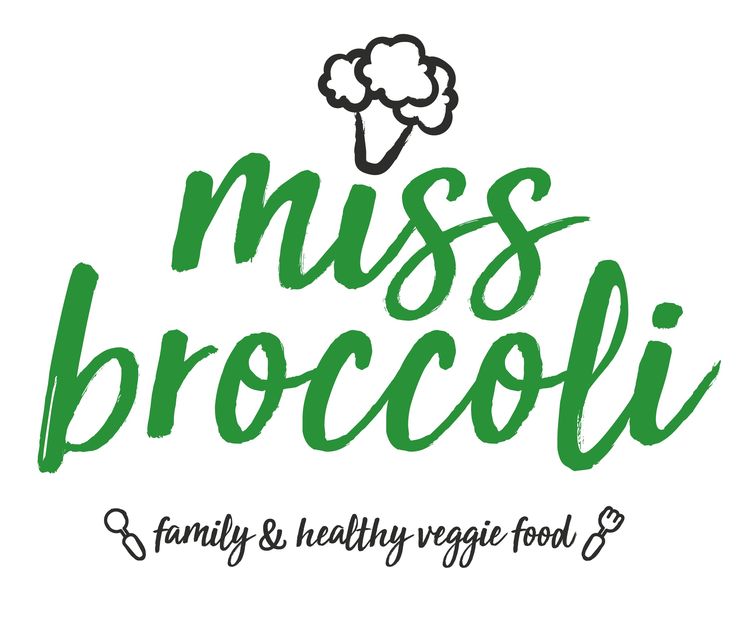 It is this storage that allows you to save vitamin C in a vegetable. Fresh broccoli should be stored for about 4 days. You should not store broccoli in the same tray as tomatoes, apples and carrots, as the rate of spoilage of the product may increase.
It is this storage that allows you to save vitamin C in a vegetable. Fresh broccoli should be stored for about 4 days. You should not store broccoli in the same tray as tomatoes, apples and carrots, as the rate of spoilage of the product may increase.
Do not wash the vegetable before storage (it will rot faster) and try to use it as quickly as possible.
Remember lignin - did we mention it?
Well, this substance can also start to develop in broccoli that has been stored for too long, ruining the vegetable's natural sweetness. Therefore, it is ideal to buy and cook delicious broccoli puree for the baby on the same day. However, you can freeze the vegetable or vegetable puree. Please note that during long-term storage, about 50% of the beneficial qualities of broccoli are lost, and if you freeze the vegetable fresh, then only 10%.
The peak season for broccoli is from June to October, although broccoli is available all year round.
Can frozen broccoli be used in baby food recipes?
Broccoli is definitely best eaten fresh, but if really fresh broccoli is not available, frozen can be used. True, when buying, we pay attention to the type of frozen product, since the package can be made up entirely of one broccoli stalk. Of course, the stems contain some nutrients, but the florets contain many more. We also feel the bag well for the presence of ice in it, this suggests that the broccoli may have been repeatedly defrosted and frozen.
True, when buying, we pay attention to the type of frozen product, since the package can be made up entirely of one broccoli stalk. Of course, the stems contain some nutrients, but the florets contain many more. We also feel the bag well for the presence of ice in it, this suggests that the broccoli may have been repeatedly defrosted and frozen.
How to cook broccoli
Broccoli is commonly used in baby food as a vegetable puree, then as a finger food, and later in many dishes.
It is broccoli that likes to be digested often. Not only will this destroy its taste and texture, it will also reduce its nutritional value.
The nutrients in broccoli are water soluble, which means they leach into the water during the cooking process. It is important to be sure in baby food that vegetables are cooked for the baby in such a way that many of the nutrients are retained.
Note : How to cook broccoli??? Yes, you can not cook, but eat it raw, which of course retains most of the nutrients, but raw broccoli is too difficult for a child's stomach to digest! And not an unimportant detail, they can choke if it is fresh, not boiled.
It is better to wait with the introduction of raw broccoli until an older age!
However, the good news is that steaming only destroys 20% of the nutrients. Also, some people cook broccoli in an interesting way to preserve nutrients, namely sulforaphane (the main assistant in the fight against cancer cells). They blend raw broccoli with a blender, let it stand for about 40 minutes and then boil it.
So how do you cook broccoli for kids? Inflorescences and stems are thoroughly washed. The ends of the stems are cut off. The inflorescences are separated from the stems and reduced by separation from each other to the desired size. You can soak for 20 minutes in cold water to get rid of various bugs. Broccoli can be boiled in water, but steamed is best. If we cook in water, then we throw the broccoli inflorescences into boiling water and over low heat for no more than 5-7 minutes, check the readiness of the product with a fork, if it is pierced, then drain the water.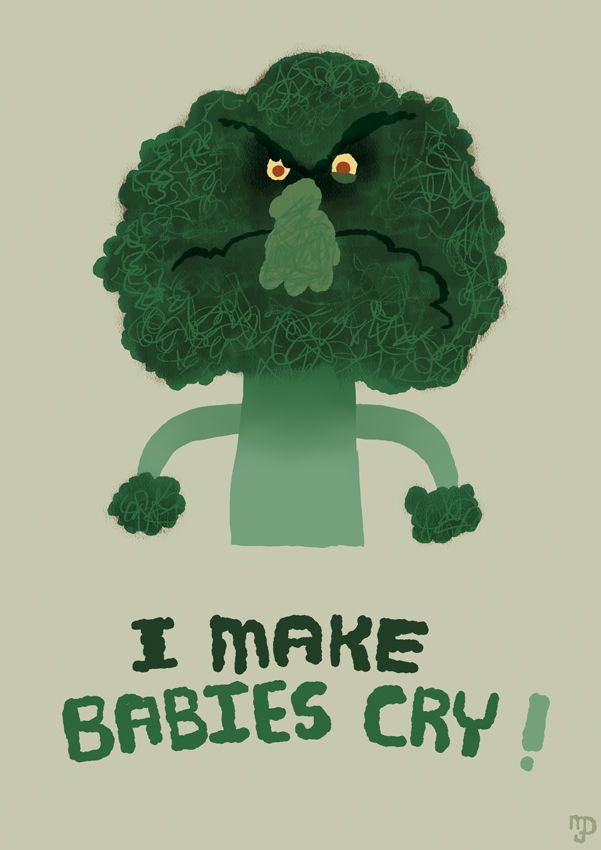 Broccoli vegetable broth can be used to make baby puree. Remember that the stems cook longer than the inflorescences. Therefore, you can first throw the stems into boiling water, and then the inflorescences, or cook only one inflorescence for the baby. Steam broccoli for no more than 15 minutes.
Broccoli vegetable broth can be used to make baby puree. Remember that the stems cook longer than the inflorescences. Therefore, you can first throw the stems into boiling water, and then the inflorescences, or cook only one inflorescence for the baby. Steam broccoli for no more than 15 minutes.
Note about broccoli leaves: Most people throw away the leaves, however they are edible and are actually very nutritious. They can be slightly bitter, so they can be added to soups or other adult cuisine dishes.
To make mashed broccoli, place cooked broccoli in a blender and blend until smooth, add a little water, vegetable stock or formula/mother's milk to achieve the desired consistency.
Frozen broccoli for children is prepared in the same way as fresh broccoli, only it does not need to be thawed and washed. We throw into a double boiler or into boiling water and then, as described above.
You can freeze mashed broccoli if you plan to use it within one month - but it's best to make baby broccoli puree in one go to retain most of all the wonderful nutrients.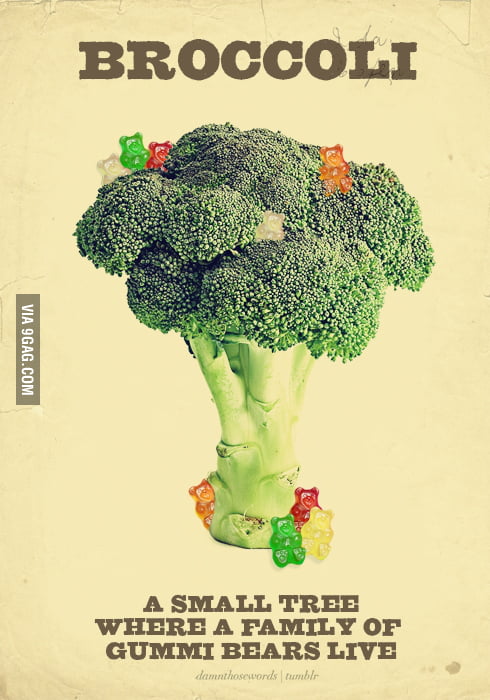
If your child doesn't like broccoli on its own, the good news is that it's very easy to mix with other foods, and they may love some of the combinations.
Here are a few ideas...
(depending on the age of the child and the foods included in his diet)
- An interesting combination is mashed broccoli with peas, sweet potatoes, zucchini, carrots or cauliflower.
- Broccoli puree with apple or pear puree. This combination may seem nasty, but the baby will love this puree.
- Cut very finely cooked broccoli and mix with your favorite pasta sauce or soup.
- Instead of simmering broccoli in a little water, try using a little beef broth instead - the subtle difference in taste will appeal to your little one!
- Add the raisins to the pot while cooking the broccoli, then whisk it all together. Another weird and wonderful combination, but a big success.
- Mix boiled broccoli with cheese.
- Serve cooked florets like canapés topped with grated cheese for an interesting finger food.

Broccoli puree storage
Cooked broccoli puree can be stored in a glass baby food jar or saucepan with a lid or in an airtight container for up to 24 hours. This rule applies to all types of ready-made purees, until the child is 1 year old. When introducing complementary foods into the baby's diet, it is best to cook vegetable purees for one time, especially for the first months, when the baby reaches 8-9 months, many parents begin to cook for 2 times, i.e. the rule is to store in the refrigerator for no more than 24 hours. Freezing mashed broccoli is possible for up to 3 months, but it is better to use it in the first month of freezing. Defrost the puree in the refrigerator overnight. Broccoli purée freezes very well, texture is slightly watery when thawed (rice flakes can be added), best frozen in an ice cube tray.
How to freeze broccoli puree for baby food
Freezing broccoli for baby food is very easy, the main thing is to choose a good quality vegetable during its growing season in Russia in June-July. Then prepare broccoli for freezing, you need to wash it, divide it into inflorescences, hold it in cold water for about an hour to rid the vegetable of insects and harmful substances. Then you can freeze in 2 ways, like cauliflower:
Then prepare broccoli for freezing, you need to wash it, divide it into inflorescences, hold it in cold water for about an hour to rid the vegetable of insects and harmful substances. Then you can freeze in 2 ways, like cauliflower:
- Dry broccoli florets, put in sealed bags of 200-300 grams and freeze with quick freezing.
- Blanch:
A) Throw broccoli into boiling water for 1-2 minutes, then dip the vegetable into ice water. To preserve the bright color, lemon juice is added to ice water. Next, dry.
B) Steam the broccoli in a double boiler for 3-4 minutes. Then we take it out and dry it.
We freeze only in a dry form with quick freezing (temperature from -18 C to -23 C). We store frozen broccoli for 6-9 months when properly frozen. If kids love the combination of 2 types of cabbage: broccoli and cauliflower, then they can be frozen together. Yes, do not forget to indicate the date of freezing. We put it in small sealed bags, for better freezing and it is more convenient to use small portions when preparing baby food.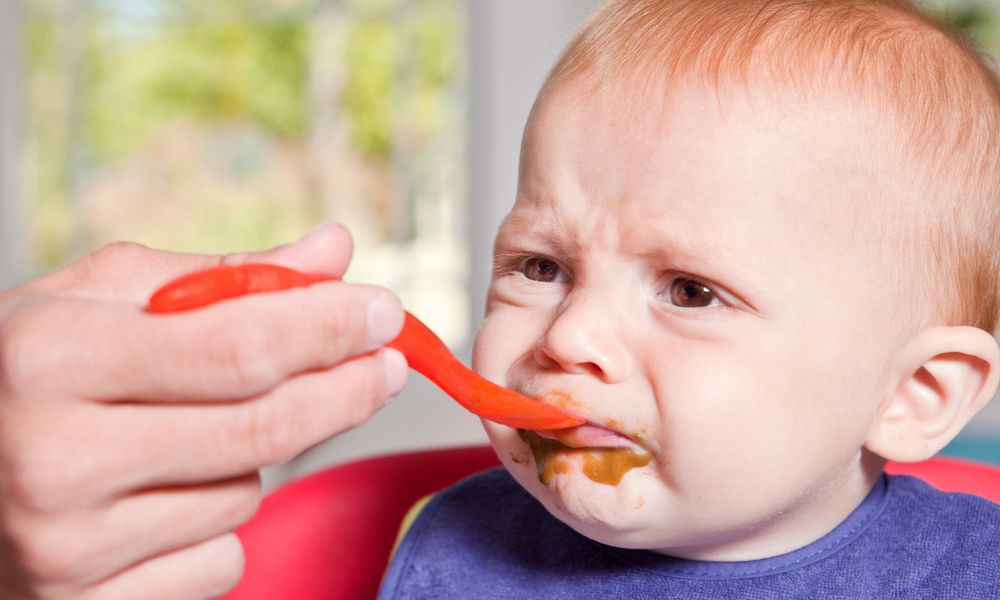 Re-freezing is not recommended.
Re-freezing is not recommended.
The approximate age of introducing broccoli into the diet of children, as we wrote above, is 7 months after the introduction of zucchini or cauliflower. Broccoli is a low allergenic food, so it is easily introduced into the baby's diet. However, remember the rule of waiting for about 4-7 days when introducing the product into the baby's diet. Since the baby has already met the first food products, and no allergic reaction has been detected, broccoli is introduced as follows. Below is an example, we interpret it based on our feeding situation. Zucchini and broccoli are boiled separately, and broccoli can be cooked quite a bit, the main thing is that the blender takes a small mass, and the zucchini takes a standard mass that the child eats. Then the parent has 2 options for introducing broccoli into the baby's diet:
- Before zucchini, give 1 teaspoon of broccoli, then top with zucchini puree.
- Put 1 teaspoon of broccoli puree into the zucchini and mix, feed the baby as usual.

If the baby spilled out, then on a new product, since the reaction to the zucchini in the baby was not observed. We increase the dosage of broccoli puree according to the table indicated here. Gradually, the proportion of squash puree decreases and the proportion of broccoli increases. Thus, a new product is introduced, as I wrote earlier, the introduction of the first 10 products will take longer than the introduction of the next one.
broccoli complementary foods
How much broccoli can children eat per day?
broccoli complementary foods Approximately 50 grams of broccoli puree are introduced in the first week. Various sources write that it is better to stick to this particular serving until about a year old, due to the characteristics of broccoli for increased gas formation (consider what I wrote above, a child can easily adapt to broccoli). You can give broccoli to children about 2-3 times a week. After 2 years, you can increase the number of intakes per week to 3-4 times a week, the portion can also be doubled.
It is also important to note that approximately broccoli takes about 2 hours to digest, but given the puree-like form, less. And mashed broccoli is best eaten in the morning.
By the way, I found information that children over 2 years old can be given raw broccoli, but it all depends on the child’s ability to digest the product, so in my opinion it’s better to wait until 5 years old, provided that you eat it at home.
If the baby does not accept the taste of broccoli, then mix a small amount of this puree with potatoes, carrots or zucchini. We take into account that the taste of canned puree differs from the taste of home cooking (I wrote about it here). It's also important to note that mashed broccoli may not be to your liking for its consistency or color. For adults, baked broccoli with cheese can be offered as a finger food.
Fried broccoli should not be given until 3 years of age. In general, it is better not to give fried foods to a child under 3 years old. Many recipes can be prepared from this cabbage, not only battered broccoli.
Many recipes can be prepared from this cabbage, not only battered broccoli.
Broccoli Allergy
In complementary foods, broccoli allergy develops when a person's immune system incorrectly determines that the food is potentially harmful and foreign. The immune system produces antibodies to broccoli, known as immunoglobulins. When a person eats broccoli again later, the immune system reacts to the food and releases chemicals that cause the symptoms of an allergic reaction.
An allergic reaction occurs when broccoli is ingested due to the salicylate content in it, and not because of the cabbage itself. Salicylates are chemicals found in all plants. Even a small amount of salicylates causes allergies. A person with a sensitivity to salicylates is also likely to notice symptoms when eating foods such as apples, avocados, strawberries, cucumbers, zucchini, bell peppers, coffee, and nuts.
It is important to consider that high dosages of salicylates are found in drugs such as aspirin.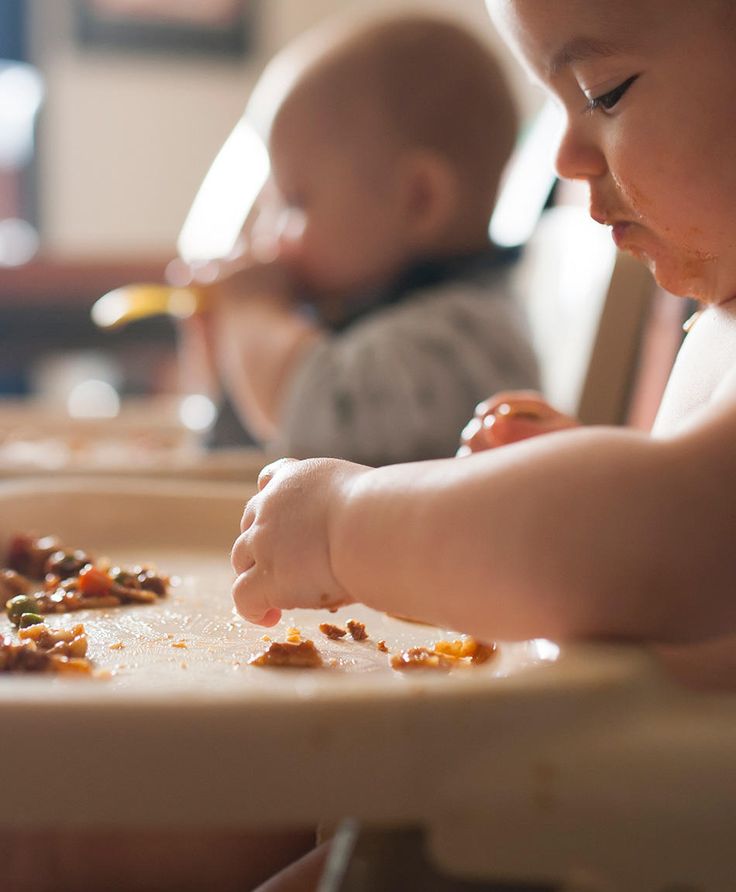
Some people are allergic to broccoli because this type of cabbage contains proteins similar to those found in pollen, to which they are allergic. This is called oral allergy syndrome (or fruit pollen allergy syndrome). If there is an allergy to wormwood pollen, then a person may react to broccoli and other plant products. This is a rare cause of pollen food allergy.
Symptoms of broccoli allergy usually occur within minutes to an hour after ingestion of the vegetable or foods containing it. These symptoms include itching or tingling in the mouth, skin rash or hives, swelling of the hands, feet, or lips, difficulty breathing, nausea, vomiting, coughing, and dizziness. Any combination or all of these symptoms can occur as a result of an allergic reaction. A severe allergic reaction, known as anaphylaxis, may also occur. This is a life-threatening reaction that includes throat constriction, difficulty breathing, and dizziness with low blood pressure.
Broccoli food intolerance
A food intolerance to complementary broccoli is different from a food allergy in that it affects the digestive system and not the immune system. The symptoms will vary from an allergic reaction, but can be similar:
The symptoms will vary from an allergic reaction, but can be similar:
- Luminous pain
- GAZ
- Spasms
- Bloating
- Fatigue
- Capivils
If the allergy was confirmed by the allergy to the Barro crockery, the allergy is confirmed by the allergy then you should stop eating it. Raw or boiled cabbage can cause allergies. You may also need to avoid any product containing salicylates.
People who are allergic or intolerant to broccoli and salicylates in their diet may need to avoid a long list of plant foods to reduce symptoms. This can affect quality of life and health. A diet without salicylates can lead to a lack of the following important vitamins and minerals:
- Calcium
- 9000
- Vitamins C, D, E
- iodine
- Alpha-linolenic acid
- Fiber
Contraindications
205There are no special contraindications to the use of broccoli. However, in baby food, it should be added with caution to complementary foods in the following cases:
- If there is an individual intolerance to the product or the patient has been diagnosed with an allergy.

- In diseases of the gastrointestinal tract, hyperacidity, and also if there are diseases of the pancreas.
- It is important to note that broccoli vegetable broth should not be used in complementary foods, as it may contain substances hazardous to the child's body (adenine and guanine). Boiled cabbage is added to the soup at the end.
How to give broccoli to children?
Broccoli should only be given to children when cooked. You can steam, boil, or bake. Which way to choose is up to the parents. But I recommend quick steaming as the best method for cooking broccoli. This method provides the best compromise between taste, texture and nutrients. After all, short steaming is a great way to preserve the antioxidant properties and phenol. And while other cooking methods may better preserve nutrients like quercetin and kaempferol, or even vitamin C, I still like steaming the best.
It should also be noted that steaming (rather than boiling) broccoli helps preserve its nutrients. Roasting broccoli also works, but baking in the oven gives it a tougher texture. For young children, steaming is the safest option as it is gentle on their small gums.
Roasting broccoli also works, but baking in the oven gives it a tougher texture. For young children, steaming is the safest option as it is gentle on their small gums.
At the beginning of complementary foods, the child is usually given broccoli puree, then the child is gradually transferred to finger food, then broccoli soups can be cooked.
Broccoli is not often found in Russian cuisine, so basically the most common recipe is battered broccoli. But it's perfect for creamy soups, casseroles, mixed vegetables and salads. Yes, regular finger food will look brighter with broccoli. Therefore, you should not limit yourself to this unique product, you can cook it more often, experiment with spices or cooking methods. Children will love broccoli when presented with different tasty options.
Finger food and broccoli Broccoli, Carrots & Boiled Fish Fillets - Navazhka
Broccoli, steamed to a soft consistency, makes a great first finger food for a baby once they are ready to eat, which is usually around 8-10 months.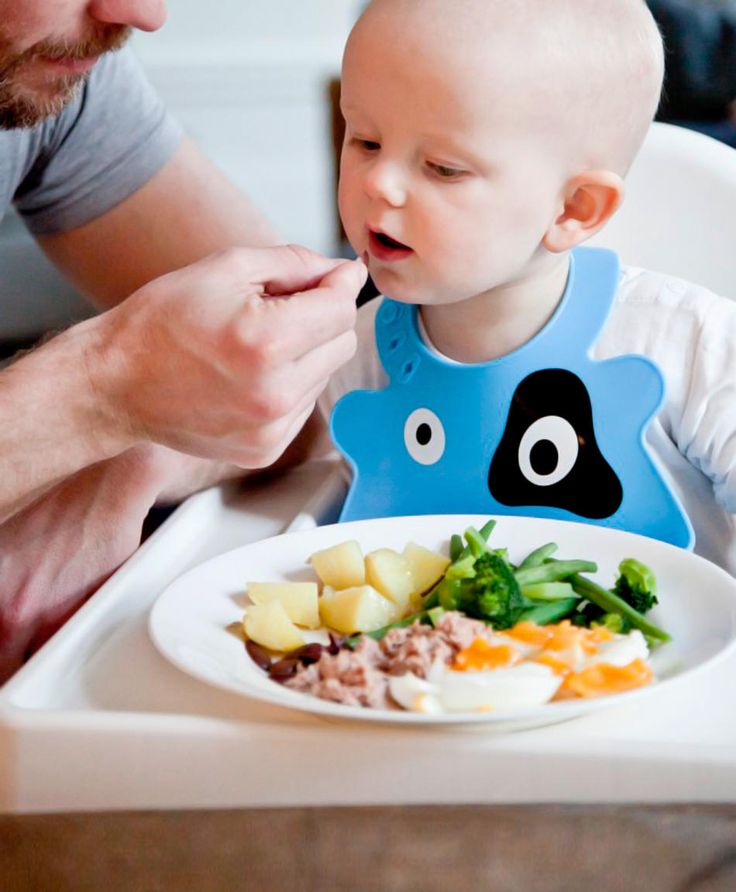 Broccoli is highly nutritious and the small buds on the buds make it an interesting food for kids to touch and explore.
Broccoli is highly nutritious and the small buds on the buds make it an interesting food for kids to touch and explore.
8 to 9 months: Very delicate steamed florets. It is better to remove the hard stem. Moving from smaller to larger pieces to help your child learn to move the texture around in their mouth.
Chicken fillet, cucumber, broccoli, apple, Borodinsky black bread, baby cottage cheese as sauce9 to 12 months: At this age, the child begins to develop a pincer grip at the junction of the thumb and forefinger. You can try moving to smaller, bite-sized pieces of broccoli. If it is difficult for a child to collect small pieces, increase the size. Large chunks of food will do just fine - just make sure they're well cooked and tender. This period is the dirtiest, broccoli is easy to smear on the highchair, hair and clothes.
12 to 24 months : As your child becomes more experienced with eating, you can slightly reduce the time used to stew or cook broccoli.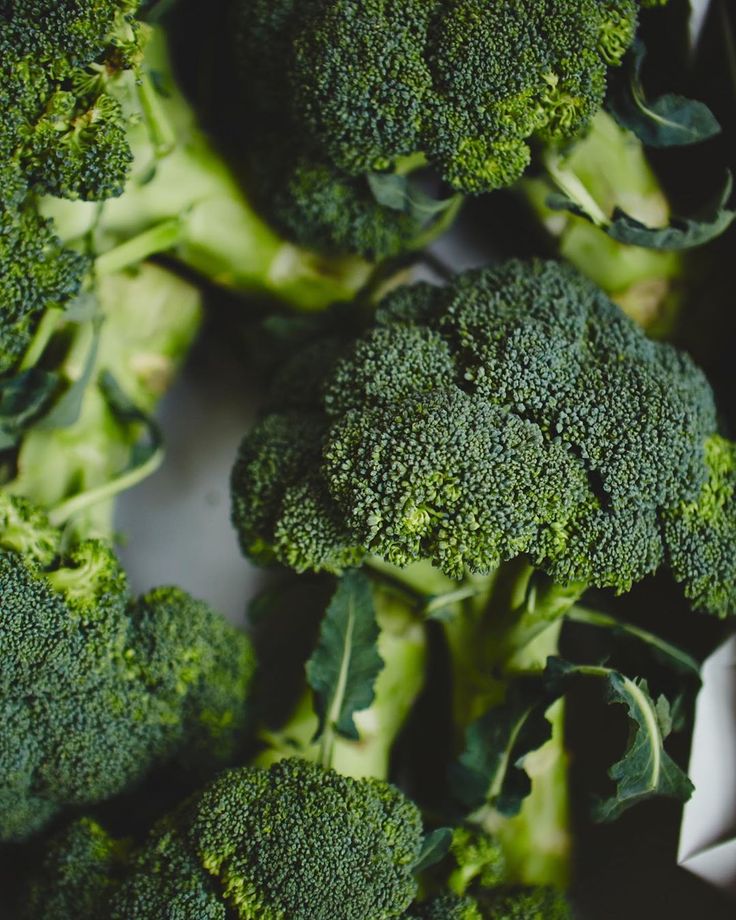 You can also add broccoli to any dish you like.
You can also add broccoli to any dish you like.
Broccoli is perfect for finger food. The bright green color as well as the unusual tree-like appearance will attract children.
Broccoli - a choking hazard to babies?
Although broccoli is not on the list of choking hazards, theoretically any food can be a hazard if not cooked and/or cut properly for a child. To minimize the chance of choking, steam the broccoli florets until soft, then cut each floret in half along the stem. You can also completely cut off the stem if the parents think it's safer.
Broccoli baby food
Cauliflower and broccoli puree Broccoli is considered one of the first hypoallergenic vegetables. Broccoli puree can be easily bought both in its pure form without additives, and assorted vegetables, vegetable-meat, vegetable-fish combinations. The most common combination with broccoli is with rice or with rice and rabbit. I don't know why manufacturers like this combination so much. I draw your attention to the fact that broccoli puree from almost all manufacturers contains water, I also saw an additive in the form of potassium from Frutonyan, and rice flour from Hipp. The only children's purees of the brands Egor Ivanych and Useful for children are made without water , containing only the product, as well as according to GOST. Almost all jars are marked at 4-5 months, I draw your attention to the fact that the ideal age of acquaintance with broccoli is about 7 months, since increased gas formation is possible.
I draw your attention to the fact that broccoli puree from almost all manufacturers contains water, I also saw an additive in the form of potassium from Frutonyan, and rice flour from Hipp. The only children's purees of the brands Egor Ivanych and Useful for children are made without water , containing only the product, as well as according to GOST. Almost all jars are marked at 4-5 months, I draw your attention to the fact that the ideal age of acquaintance with broccoli is about 7 months, since increased gas formation is possible.
Below is a list of brands that make baby food with broccoli.
Gerber
- Green peas-broccoli-zucchini puree, from 6 months, 125 grams
- Rabbit stew with broccoli from 8 months 190 grams
- Puree only broccoli-zucchini, from 6 months, 130 grams (pieces)
- Vegetables with noodles in cream sauce from 8 months 220 grams (pieces)
- Broccoli-rice puree, from 5 months, 125 grams
- Broccoli with rice and rabbit from 8 months 220 grams (pieces) )
- Broccoli.
 My first puree from 4 months 80 grams (rice of rough grinding)
My first puree from 4 months 80 grams (rice of rough grinding)
Semper
- Italian paste with trout in cream sauce from 11 months 190 grams (pieces) 9000 9000 9000 9000 9000 9000 9000 9000 9000 9000 9000 9000 9000 9000 9000 9000 9000 9000 9000 9000 9000 9000 9000 125 grams
- Broccoli puree with rabbit and rice from 9 months 190 grams (pieces)
Theme
- Beef with broccoli, carrots and rice from 6 months 100 grams0010
Babushkino Lukoshko
- Broccoli puree, from 4 months, 100 grams
- Broccoli soup with turrets, from 10 months, 190 grams (pieces)
- puree Kabachki-Brookoli from 5 months of 5 months from 5 months 100 grams
- mashed boar-Brookoli-Cartofel from 5 months 100 grams
Heinz
Frutonyanya
- Rabbit-broccoli-rice puree, from 8 months, 100 grams
Egor Ivanovich
- Broccoli GOST, from 4 months, 80 grams
useful for children
, which are well combined with well, which are well combined.
 broccoli:
broccoli: 9019 !
Like this article? Subscribe to site updates
"Encyclopedia Baby Food"!
Don't forget to bookmark us! (CTRL+SHIFT+D) Subscribe to the site, comment, share in social networks.
On our site Encyclopedia Baby Food there is useful information on the nutrition of your children, which is useful for everyone, and we update the site "Encyclopedia Baby Food" constantly and try to search and write only excellent, verified and necessary information for you and your children.
Disclaimer No. 1: It must be understood that the author of the articles on the Baby Food Encyclopedia website is not a medical staff, “I am not a doctor.” The information I share is based on my own experience. My goal is not to teach you how to eat or feed your child, but to talk about how we did it, what new things I learned or read. This expands the picture of Baby Food knowledge, gives you a glimpse of the whole process so you can decide if you like it or not.
This expands the picture of Baby Food knowledge, gives you a glimpse of the whole process so you can decide if you like it or not.
Disclaimer No. 2 : However, the above does not cancel visiting a pediatrician. Before you start complementary foods, you need to get his professional opinion on the best way to introduce new foods for your baby. I also draw your attention to the fact that you need to look at the original date of the published articles, because some of the "best practices" may have changed. Always check with your child's pediatrician about complementary foods and their health.
Disclaimer #3: Keep in mind that every family is unique, every situation is also completely unique. There are no universal solutions. Only you can find what works best for you. Certain goals require certain sacrifices and priorities - not everyone wants to make those choices, and that's GREAT! Just know what you want to achieve, and be ready to get to work, putting the best of your strength!
Disclaimer No.






